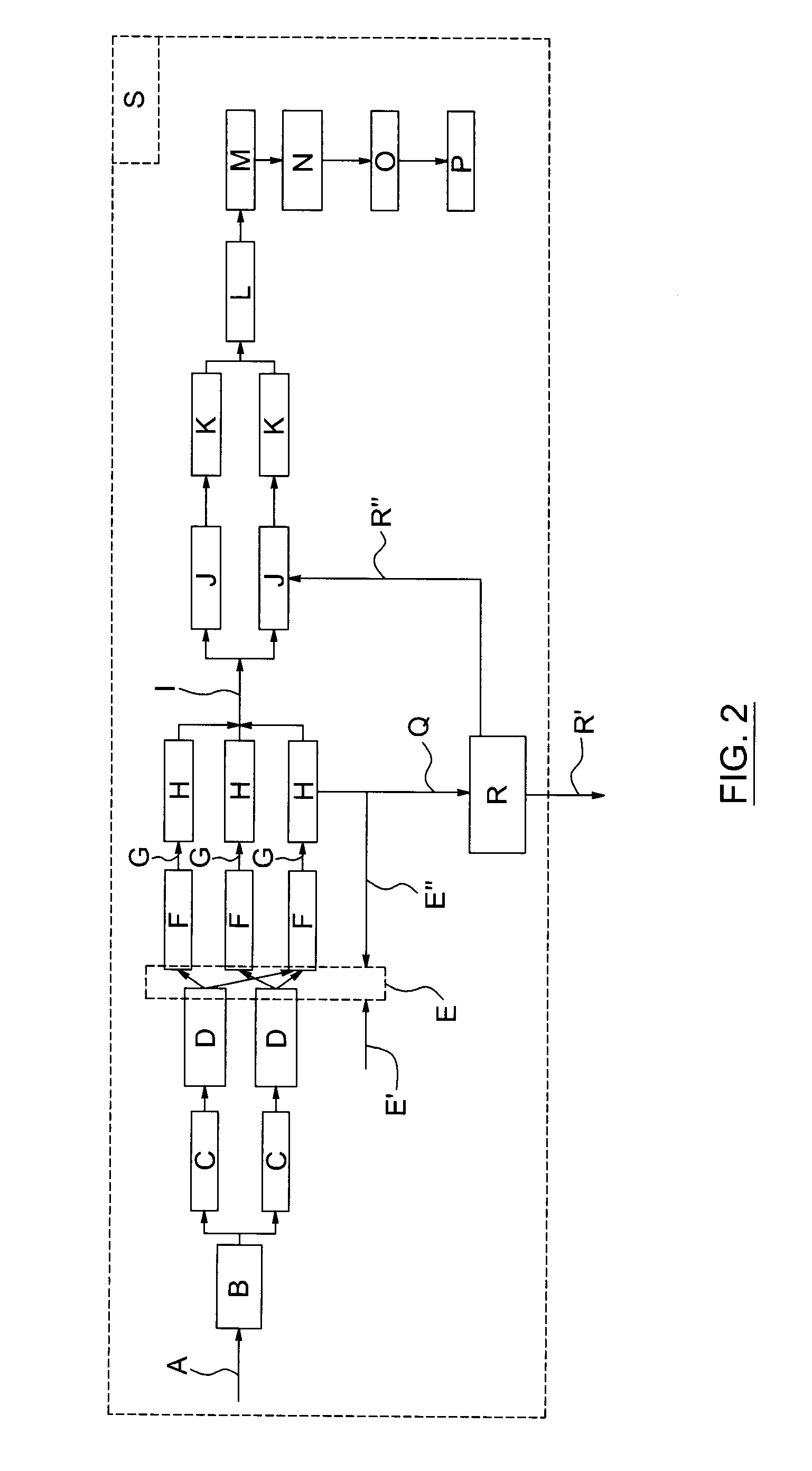Fermentation process of a substrate using a mixed culture for the production of an edible biomass for animal and/or human consumption
a technology of fermentation process and mixed culture, which is applied in the direction of fungi based process, sweetmeat, tea extraction, etc., can solve the problems of limiting the growth of the plant, the method does not get rid of the salted mother liquor, and the method does not get rid of the lactose rich in the permea
- Summary
- Abstract
- Description
- Claims
- Application Information
AI Technical Summary
Benefits of technology
Problems solved by technology
Method used
Image
Examples
example 1
[0095]As shown in FIG. 1, substrate is received in piping (1) where acids and bases (2) are added, when necessary, to adjust the pH to the appropriate value before being eventually admitted to a pasteurization system (3).
[0096]Optionally, temperature substrate is further raised to ensure the precipitation of serous proteins. This step is achieved with equipment that allows for reaching of required time and temperature conditions (4). Temperature substrate is cooled with a cooling system (3b).
[0097]To reduce the organic load, a dilution may be performed by injecting in (5b) city water (5a) or adding clarified water (12c) coming out (20) from the separation system (19).
[0098]Substrate is admitted in through the top of the bioreactor vessel (6) that contains the fermenting liquor.
[0099]The bioreactor is aerated by a system of air diffusers (7) powered by a blower (8), including an oxymeter.
[0100]An area of anoxia (9) is located under the air diffuser (7).
[0101]Air coming out of the bio...
example 2
[0113]A bioreactor containing conditioned (i.e. slightly diluted and added with urea and biocatalyst) and skimmed whey is seeded by using the three strains described in the present invention, Kluyveromyces marxianus, Saccharomyces unisporus and Lactobacillus fermentum, at pH 3.5 and to ambient temperature at 20° C. The aeration to which it is subjected causes an increase in the turbidity because of the growth of flora, while the temperature rises. Once the lactose is depleted, the bioreactor is fed with whey continuously. The heat generated by biological reactions is removed by a heat exchanger and a cooling system maintains the temperature between 35° C.
[0114]The liquor coming out of the bioreactor is directed towards a centrifuge, which sends the biomass partly in a production tank while another part is recycled in the bioreactor in order to maintain a proper mass load. Clarified water is sent to the sewer. The system is stable and may, thus, remain for a long period without drift...
example 3
[0115]Another embodiment of the process of the invention is shown with example 3 and FIG. 2. The following is a flowchart explanation of the plant operation on a 24 h-7 days / week schedule of the process including the cleaning-in-place system.
A. Raw Whey Permeate Input
[0116]Flow rate: 300 m3 / day[0117]Temperature: 20° C. to 35° C.[0118]pH: 3.4 to 6.5[0119]COD: 60-70 g / l
B. Whey Permeate Buffer Tank
[0120]1 whey permeate buffer tank[0121]pH adjustment with caustic or acid solutions
[0122]2 HTST (Hot Temperature Short Time) pasteurizers in parallel operating at the same time or can be used alternately to allow cleaning and production[0123]Pasteurization at 72 to 75° C. with a 15 to 60 seconds holding time
D. Pasteurized Whey Permeate Buffer Tank
[0124]2 pasteurized whey permeate buffer tanks[0125]Can be used alternately to allow cleaning and production at the same time[0126]They must be linked to a heat exchanger to regulate the temperature of whey permeate prior to being pu...
PUM
| Property | Measurement | Unit |
|---|---|---|
| temperature | aaaaa | aaaaa |
| temperature | aaaaa | aaaaa |
| temperature | aaaaa | aaaaa |
Abstract
Description
Claims
Application Information
 Login to View More
Login to View More - R&D
- Intellectual Property
- Life Sciences
- Materials
- Tech Scout
- Unparalleled Data Quality
- Higher Quality Content
- 60% Fewer Hallucinations
Browse by: Latest US Patents, China's latest patents, Technical Efficacy Thesaurus, Application Domain, Technology Topic, Popular Technical Reports.
© 2025 PatSnap. All rights reserved.Legal|Privacy policy|Modern Slavery Act Transparency Statement|Sitemap|About US| Contact US: help@patsnap.com


